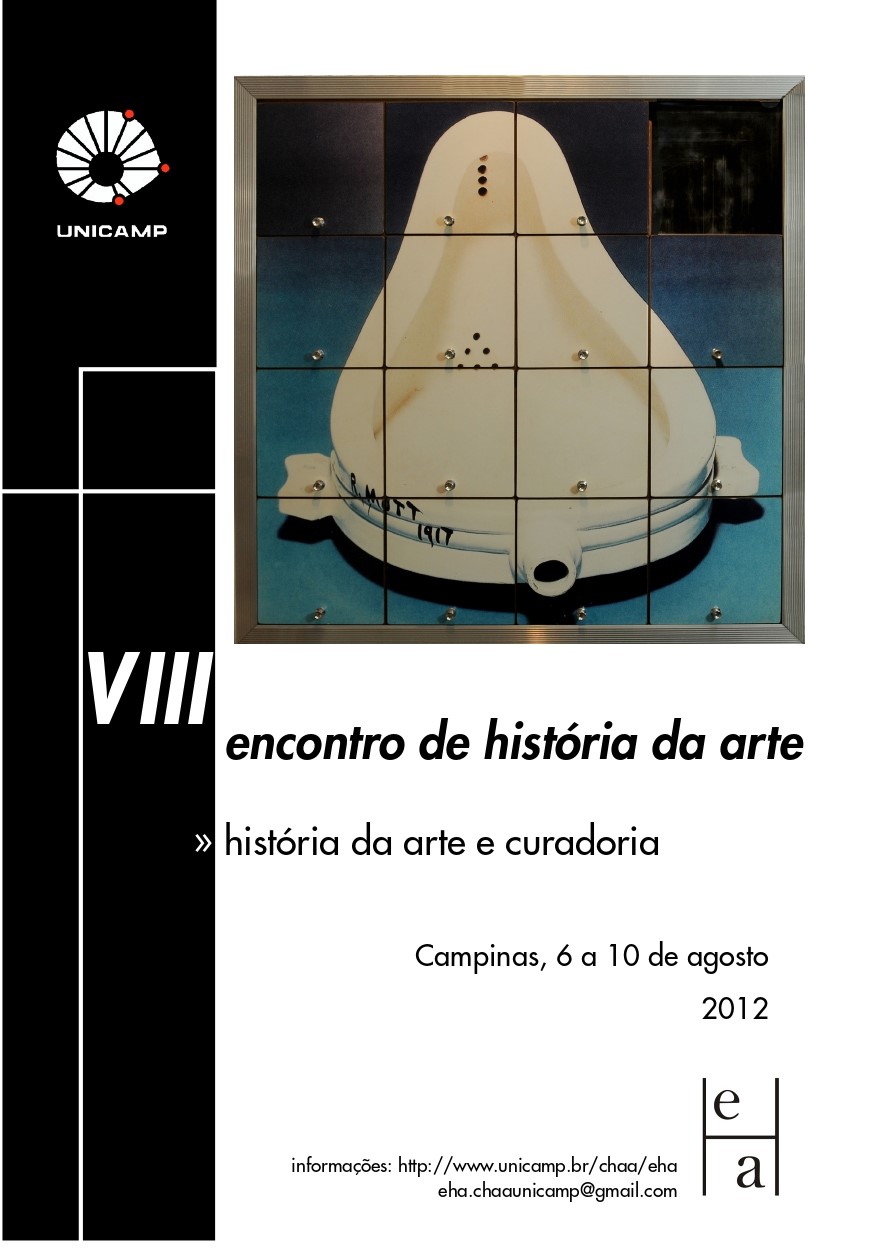Abstract
Este trabalho pretende expor algumas dificuldades que existem para os artistas que não se enquadram facilmente nas categorias principais da história da arte, usando o exemplo de Thornton Dial. A arte do Thornton Dial, e sua carreira junta com Bill Arnett, seu patrono, propõe muitas perguntas, a muito variadas. Este trabalho tenta pesquisar sobre algumas delas, principalmente sobre a categorização do artista, e a dificuldade na comprensão dele usando metodos convencias da historia da arte. O fin desta pesquisa deverá lançar alguma luz sobre os fatores que mantiveram à Dial fora das instituções do corrente principal, e analisar porque é que Dial e outros artistas como ele, são muitas vezes deixados de fora do famoso Cânon de arte elevado. Também se examinara o progresso obtido pelo principal promotor Dial, Bill Arnett, através da sua determinação implacável para obter reconhecimento para Dial e ver sua inclusão nos principais instituições de arte. É importante notar que os acontecimentos históricos que são mencionados aqui são simplesmente destacados por sua relevância para este trabalho, e de modo nenhum abrangem a totalidade da longa e complexa história do Dial e Arnett juntos.
References
American Vernacular Art of the South, VoluCarey, C. (Producer & Director). (2007). Mr. Dial Has Something to Say [Motion picture]. (Available from Alabma Public Televsion).
Anderson, M., interview, 27 July 2012.
Arnett, P. An Introduction to Other Rivers (2000). In Souls Grown Deep: African me 1(p. xiii-xxii.). Atlanta: Tinwood 11 Books. American Vernacular Art of the South, Volu
Arnett, W., interview. 7 August 2012.
Carey, C. (Producer & Director). (2007). Mr. Dial Has Something to Say [Motion picture]. (Available from Alabma Public Televsion). Pollock, G. (1995).
Cubbs, J. (2011, April). Outside/In: The Art of Thornton Dial. [Hard Truths: A Forum on Art and the Politics of Difference]. Retrieved from: http://www.imamuseum.org/art/exhibitions/dial/about/hard-truths-forum
Cubbs, J. (2011). Hard Truths: The Art of Thornton Dial. In Joanne Cubbs & Eugene Metcalf (Eds.), Hard Truths / The Art of Thornton Dial (58-59). Indianapolis: Indianapolis Museum of Art & DelMonico Books.
Fernie, E. (1995). Michael Baldwin, Charles Harrison, and Mel Ramsden, ‘Art History, Art Criticism and Explanation’, 1981. In Eric Fernie (Ed.), Art History and its Methods (261). Singapore: Phaidon.
Griselda Pollock, ‘Feminist Interventions in the Histories of Art’, 1988. In Eric Fernie (Ed.), Art History and its Methods (302). Singapore: Phaidon.
Metcalf, E. (Summer 2006). Bill Arnett, Thornton Dial and the Myth of America. Raw Vision (55), p. 24-30.
Pollock, G. (1995). Griselda Pollock, ‘Feminist Interventions in the Histories of Art’, 1988. In Eric Fernie (Ed.), Art History and its Methods (300). Singapore: Phaidon.
Tate, G. (2011). Thornton Dial: Free, Black, and Brightening Up the Darkness of the World. In Joanne Cubbs & Eugene Metcalf (Eds.), Hard Truths / The Art of Thornton Dial (28). Indianapolis: Indianapolis Museum of Art & DelMonico Books.

This work is licensed under a Creative Commons Attribution 4.0 International License.
Copyright (c) 2012 Whitney Dennis

